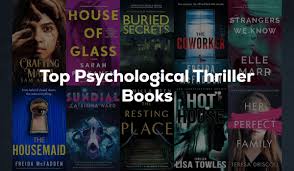Discover the psychological techniques behind Indian thriller movies, from anxiety-inducing suspense to shocking twists. Learn how Bollywood filmmakers craft mind-bending narratives that captivate audiences.
Indian thriller movies have a unique way of gripping audiences, blending psychological tension with cultural storytelling. From anxiety-inducing suspense to shocking climaxes, these films masterfully manipulate emotions to keep viewers on the edge of their seats. But what makes them so effective? This article delves into the psychological techniques behind Indian thriller films, analyzing how they evoke emotions and sustain engagement.
The Art of Anxiety: Building Suspense in Indian Thrillers
Psychological Tactics for Creating Suspense
Suspense is the lifeblood of thriller films, keeping audiences engaged and emotionally invested. Indian filmmakers employ several psychological tactics to build suspense:
- Uncertainty and Ambiguity: Many Bollywood thrillers leave crucial details unknown, forcing audiences to anticipate what might happen next.
- Time Pressure: Scenes with ticking clocks, deadlines, or life-or-death decisions heighten tension.
- Foreshadowing: Subtle hints and clues prepare viewers for shocking revelations.
- Close-up Shots and Sound Design: Intensely focused visuals and eerie background scores amplify suspense.
Notable Examples:
- Andhadhun (2018) – The film’s unreliable narrator keeps viewers guessing what’s real and what’s deception.
- Kahaani (2012) – The use of misleading information and a twist ending creates high tension throughout.
The Shock Factor: Crafting Unforgettable Twists
Why Do Plot Twists Work?
Shocking twists play a crucial role in thrillers, stimulating the brain’s need for resolution. This technique works because:
- Cognitive Dissonance: When viewers are led to believe one thing but experience another, their brains rush to resolve the contradiction.
- Expectation Violation: Audiences predict outcomes based on conventional storytelling, and when expectations are shattered, it triggers surprise.
- Emotional Release: The revelation of a shocking twist provides catharsis, allowing for an intense emotional response.
Bollywood’s Best Twists:
- Drishyam (2015) – A well-planned deception that keeps audiences re-evaluating everything they’ve seen.
- Talaash (2012) – A psychological exploration wrapped in a supernatural twist.
Psychological Themes in Indian Thrillers
The Fear of the Unknown
Thrillers often exploit fear, especially the fear of the unknown. Films like Raat (1992) and Pari (2018) blend psychological tension with supernatural elements, heightening audience anxiety.
The Moral Dilemma
Many Indian thrillers explore ethical conflicts, forcing characters into situations where they must choose between right and wrong. This moral complexity adds depth to the narrative and engages the audience on a philosophical level.
- Example: A Wednesday! (2008) presents a thought-provoking ethical debate on justice and revenge.
The Power of Mind Games
Manipulation and deception are key elements in psychological thrillers. Characters often deceive others—and sometimes themselves—creating an intricate web of psychological warfare.
- Example: Badla (2019) revolves around psychological manipulation and shifting perspectives.
The Role of Music and Cinematography in Psychological Thrillers
Music and cinematography are crucial in amplifying psychological impact:
- Sound Design: Eerie background scores, sudden silences, and jarring noises intensify emotional reactions.
- Lighting & Color Palette: Dark and muted colors create an ominous atmosphere.
- Camera Angles: Unusual angles and shaky camerawork enhance psychological discomfort.
Example:
- Raman Raghav 2.0 (2016) – The unsettling soundtrack and disturbing cinematography make the film deeply immersive.
The Cultural Influence on Indian Thrillers
Indian thrillers incorporate cultural themes, folklore, and societal issues that make them uniquely compelling.
- Superstitions and Mythology: Movies like Tumbbad (2018) mix horror with historical and mythological elements.
- Social Commentary: Thrillers often reflect real-life issues, such as corruption (Article 15, 2019) or gender dynamics (Pink, 2016).
Indian thriller movies excel in manipulating human psychology to create suspense, shock, and deep engagement. By leveraging psychological techniques, cultural narratives, and masterful storytelling, these films offer audiences an emotional rollercoaster that lingers long after the credits roll. Whether through mind-bending twists or anxiety-inducing suspense, Bollywood continues to push the boundaries of psychological thrillers.
FAQ
1. What makes Indian thrillers different from Hollywood thrillers?
Indian thrillers often incorporate cultural themes, emotional depth, and musical elements, making them distinct from Hollywood thrillers, which typically focus more on action and high-speed storytelling.
2. Why do plot twists work so well in thrillers?
Plot twists exploit cognitive dissonance and expectation violation, creating a strong emotional response in viewers.
3. What are some must-watch Indian psychological thrillers?
Some of the best include Andhadhun (2018), Kahaani (2012), Drishyam (2015), and Talaash (2012).
4. How do filmmakers use sound to enhance psychological tension?
Filmmakers use eerie scores, sudden silences, and unsettling noises to heighten suspense and evoke strong emotions.
5. Are Indian thrillers influenced by real-life events?
Yes, many Indian thrillers draw inspiration from true crime stories, societal issues, and psychological studies to add realism and relatability to their narratives.
